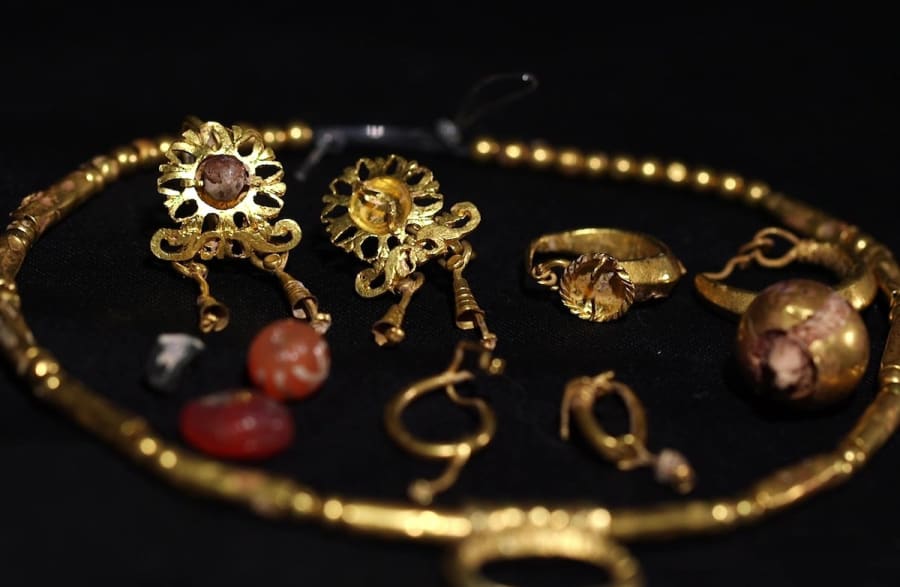Valuable Roman era gold jewelry found in 1971 presented for first time
The jewelry was discovered 50 years ago but never publicized

Gold jewelry discovered in 1971 during the excavation of a burial cave from the late Roman period was displayed this month at a professional conference organized by the Israel Antiquities Authority and other local institutions.
The jewelry dates to the Late Antiquity period, after the Romans destroyed Jerusalem and built the pagan city of Aelia Capitolina upon its ruins.
When the Roman-era gold jewelry was found during an excavation led by the late Yael Adler, the find was initially not published in any journals. The jewelry only came to light during the Israel Antiquities Authority’s “Publication of Past Excavations Project," aimed at publishing findings not yet presented.
“The location of the original reports that gathered dust over the years in the Israel Antiquities Authority archives, and physically tracing the whereabouts of the items themselves has shed light on long-forgotten treasures,” said Dr. Ayelet Dayan, head of the IAA Archaeological Research Department, which is leading the project. “The beautiful jewelry that we researched is an example of such treasures.”
Dayan, Ayelet Gruber and Dr. Yuval Baruch of the IAA researched the jewelry and said the pieces were likely very valuable and served as amulets to protect the wearer in their life and in the afterlife. They noted that the items contain symbols of the Roman moon goddess, Luna.
According to their research, two similar gold earrings were discovered on the Mount of Olives in Jerusalem during another excavation in 1975, which was carried out by Prof. Vassilios Tzaferis on behalf of the Department of Antiquities.
The items likely belonged to a young girl who “was buried with an expensive set of gold jewelry that included earrings, a chain with a lunula pendant and a hairpin,” said Tzaferis.
Aelia Capitolina “had a mixed population that reached the city after the destruction of the Jerusalem Temple” and after the predominantly Jewish population was scattered, according to the research team.
“People from different parts of the Roman Empire settled in the city, bringing with them a different set of values, beliefs and rituals. The pagan cult of the city’s new population was rich and varied, including gods and goddesses, among them the cult of the moon goddess Luna,” they stated.

The All Israel News Staff is a team of journalists in Israel.














